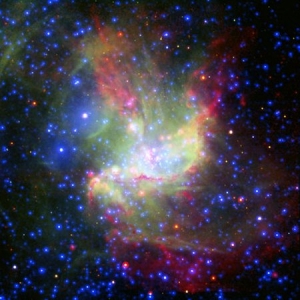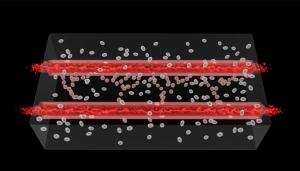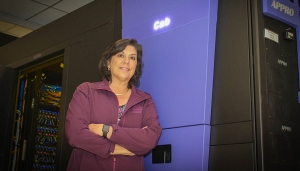LAB REPORT
Science and Technology Making Headlines
Dec. 18, 2015


Global precipitation increase per degree of global warming at the end of the 21st century may be about 40 percent smaller than what the models currently predict. Photo courtesy of Haley Luna.
Putting the reins on rain
Lawrence Livermore researchers and collaborators have found that most climate models overestimate the increase in global precipitation due to climate change.
Specifically, the team looked at 25 models and found they underestimate the increase in absorption of sunlight by water vapor as the atmosphere becomes moister, and therefore overestimate increases in global precipitation. The team found global precipitation increase per degree of global warming at the end of the 21st century may be about 40 percent smaller than what the models, on average, currently predict.
The team found that the increase in global precipitation simulated by models is strongly controlled by how much additional sunlight is absorbed by water vapor as the planet warms: Models in which more sunlight is absorbed by water vapor tend to have smaller increases in precipitation.


NGC 346 is a star cluster in the Large Magellanic Cloud. Image courtesy of NASA.
Aiming for a star
The origin of star clusters and the high mass stars that form within them remains one of the most fundamental unsolved problems in astrophysics. Moreover, many low mass stars are born in clusters containing high mass stars. The formation of stellar clusters and massive stars lies at the center of the web of physical processes that shaped the universe as we know it — yet the processes involved in their formation remain elusive.
But Lawrence Livermore researcher Richard Klein has used high performance computers to recreate star clusters in the Laboratory.
He used advanced 3D adaptive mesh refinement to produce large-scale simulations that include magnetic fields, radiation transport, turbulence and highly energetic protostellar outflows.


DARPA is working on chip implants to restore memory functions and heal traumatic brain injuries.
Bringing back memories
About 2.7 million Americans served in the Iraq and Afghanistan wars, and at least 20 percent of them have Post Traumatic Stress Disorder (PTSD).
The Defense Advanced Research Project Agency (DARPA) says it can reduce this number by treating war veterans using chip implants.
Working with DARPA, Lawrence Livermore researchers are developing an implantable neural device with the ability to record and stimulate neurons within the brain to help restore memory. The research builds on the understanding that memory is a process in which neurons in certain regions of the brain encode information, store it and retrieve it.


LLNL researchers say the precision and 3D structures made possible through bioprinting enable more effective reproduction of human physiology outside of the body.
3D printers churn out living blood vessels
In a breakthrough that could lead to printable organs and an enhanced understanding of human physiology, researchers from Lawrence Livermore have 3D-printed functional blood vessels that look and function like the real thing.
3D bioprinters are similar to conventional 3D printers, but instead of using inert materials, they use “bio-ink”: basic structural building blocks that are compatible with the human body.
To create the 3D-printed blood vessels, a Lab team headed by research engineer Monica Moya combined this special biomaterial with living cells. The material and environment were designed to enable small blood vessels, or human capillaries, to develop on their own.


Anna Maria Bailey, LLNL high performance computing facility manager, with the Cab supercomputer that will be retrofitted with liquid cooling in January. Photos by Julie Russell/LLNL
Cool it
Supercomputers at Lawrence Livermore will be retrofitted with liquid cooling systems under a California Energy Commission (CEC) grant to assess potential energy savings.
Asetek, a leading provider of energy-efficient liquid cooling systems for data centers, servers and HPC clusters, has received a $3.5 million grant from the CEC for retrofits at two California high performance computing (HPC) centers. A second yet-to-be-disclosed California data center also will be retrofitted under the grant next year. Energy savings and the associated cost reductions are critical to data centers and supercomputing facilities around the world.
Lawrence Livermore’s CAB supercomputer will undergo retrofitting in January during the first phase of the project. CAB, a Linux commodity cluster delivering 431 teraflops (trillions of floating point operations per second) for unclassified computing, is currently air cooled. Later next year, one of the recently announced Commodity Technology System (CTS-1) clusters slated for installation at Lawrence Livermore also will be fitted with an Asetek emerging future liquid cooling technology as the second phase of this grant.





